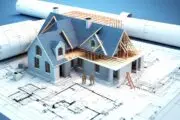Photo: James Bombales
Home insulation may not sound as exciting as buying a new sectional for your living room or re-doing your kitchen backsplash, but it’s just as important when it comes to making your home feel comfortable. In addition to keeping your home warm in the winter and cool in the summer, insulation can help lower your energy bills and maintain your home’s value.
“Without proper insulation, the air from inside your home can escape, making your HVAC system work harder, resulting in both increased energy usage and costs,” Vahid Azari, registered home inspector and owner of All Season Inspection Inc., tells Livabl. “I’ve inspected thousands of homes and have found that most homeowners automatically presume that temperature issues are due to a problem with the furnace. They never even consider the state of their insulation.”
As a registered home inspector, Azari conducts home energy audits and develops solutions to help homeowners reduce energy bills, improve their level of comfort and increase their home’s value. Here he shares five things to keep an eye on when determining if your home is under-insulated.
1. Fluctuating room temperatures
“The distribution of heat in your home tells a lot about your insulation,” says Azari. “If one room feels significantly cooler than the rest of the house, it could be a sign of a drafty window or door or a duct passing through an uninsulated area of the home, such as a crawlspace.” The warm air from the furnace travels through this cool spot and loses its heat by the time it gets to the room.
2. Soaring energy bills
Slight temperature shifts in the home are hard to notice but your energy bill doesn’t lie. Keep an eye out on your monthly statement for any spikes in heating or cooling charges. “If you notice a sharp increase in your monthly energy bill, it means your furnace is working harder to maintain your temperature setting,” explains Azari. “Even a small air leak through a crack in the wall, hole in the ceiling or a poorly insulated area can lead to much higher energy costs.”

Photo: James Bombales
3. Freezing interior walls
A simple way to test if your walls are under-insulated is to do the touch test. “Interior walls, floors and ceilings should feel warm to the touch and dry,” says Azari. “If it feels cold, damp or shows any moisture, that’s a sign of heat loss due to under-insulation or cracks.”
4. Melting snow on your roof
Under-insulated homes are easy to spot after a snowstorm. “If your neighbor’s home has a foot of snow on it after a snowstorm, but your roof is clear or shows signs of snow melting, this is a good indication of poor insulation,” says Azari. “This could be caused by insufficient attic insulation or even improperly insulated pot lights in your second floor ceiling.”
The increased flow of water can also damage shingles and cause water leakage into the attic, which in turn can lead to mold growth.
Photo: Robbie Sproule/Flickr
5. Growing ice dams
If you notice that the snow on your roof is melting, chances are you’ll also see large icicles or ice dams forming in your gutters. “The warm air that escapes from your attic heats and melts the layer of snow on your roof causing water to flow along the edge or into the gutter,” says Azari. “The water freezes when it hits the colder air causing ice dams and icicles that can damage your roof and gutters.”











